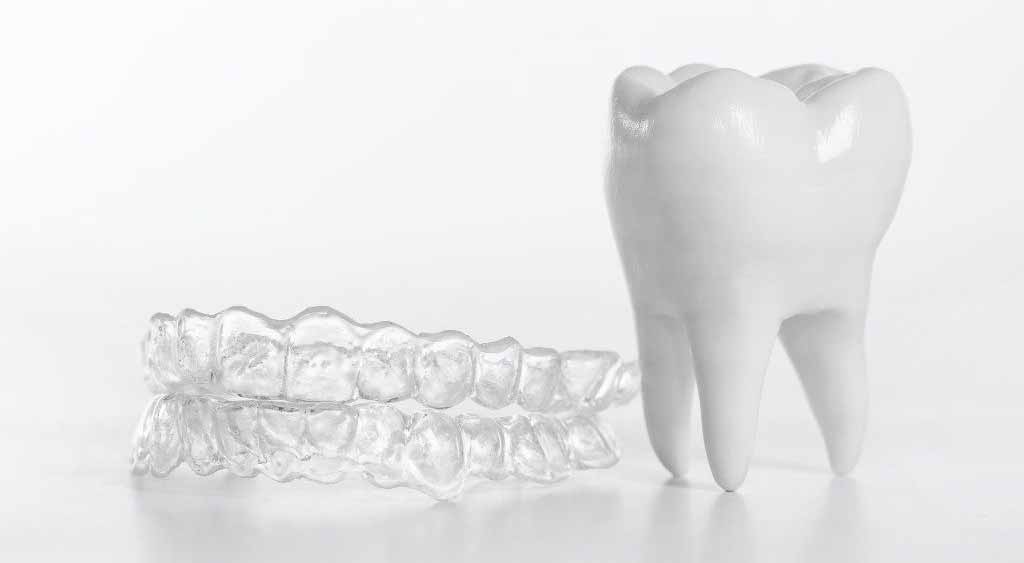Sometimes your teeth don’t grow the way you think they should. A common problem is when they come in at odd angles or get a little too cosy with each other. The condition of having crooked teeth is called dental crowding and can cause serious issues, cosmetic and health-related. If you’re worried about how this might affect you, an orthodontist is the most qualified expert you can call on.
Dental crowding is when you have overlapping or misaligned teeth — you might have heard your orthodontist call it a malocclusion. This overcrowding is characterised by a lack of space for your teeth to fit within your jaws and can be caused by your teeth rotating or displacing.
Lower teeth crowding is very common. Most people will have a few crooked teeth in their lower row, and the causes can vary. Often misaligned teeth come down to genetics, and can be passed down, but accidents and injuries or habits like thumb sucking can also move teeth around.
Moderate crowding can occur in upper and lower jaws and needs to be corrected in order for your teeth to grow in a healthy position in relation to your jawbone. Crowded teeth solutions can include a palatal expander, which can limit the need for braces. Expanders are outwardly visible and can take about nine to 12 months to treat. This can be treated while baby teeth are still present and helps mitigate adult teeth crowding. Removing teeth is also an option, but this is a last resort and your Orthodontist will let you know if it’s necessary.
Anterior crowding teeth occurs when your incisors (that’s the four top and bottom teeth in the middle) are out of place. As your incisors make up most of your smile, patients commonly cite that improving their confidence in their outward appearance is a key reason for correction. But even if cosmetics aren’t an issue, realigning your incisors makes for easier dental hygiene and therefore better oral health.

If you have mild crowding teeth that need to be monitored, or if you’re undergoing treatment, orthodontists have a few ways of measuring dental crowding. A simple option is performing a visual estimation with a clear ruler, but orthodontists can also put their years of specialist training to good use either by computer modelling with a reflex microscope, or with precision instruments. Just rest assured that accuracy is guaranteed.
There are a number of causes for teeth crowding. Often, it’s simply a growing issue, but others include:
- A cleft lip or palate
- Thumb sucking or frequent use of a dummy after the age of three
- Poor dental care
- Allergies and asthmas
- Tongue thrusting (pushing you tongue against your teeth)
- Airway obstruction like mouth-breathing
- A misaligned jaw
- Accidents and prematurely lost teeth
Dental crowding can indeed be quite uncomfortable. Most pain comes from teeth putting pressure on each other or causing your jaw to open at an odd or uncomfortable angle. Even when the malocclusion is isolated to a few teeth, it’s not uncommon for patients to feel sensations of pain in more than one area. Some people start to notice that all of their teeth are suddenly hurting without realising it can come from a small cluster of crowding. You will feel more pain the more your teeth drift from their intended positions, so it’s best to contact an orthodontist about the road to pain relief as soon as possible.

Luckily, if you have dental crowding, you have a range of tried and true treatment options. And they don’t all require braces.
Clear aligner treatments like Invisalign®, Spark® and 3M Clarity are a great braces alternative. There are also cases where orthodontists can fix your crowding with a plate, which can be permanent or removable.
Veneers and crowns offer cosmetic changes for those with minor malocclusions or those that don’t require further treatment. They don’t actually realign your teeth, rather it involves masking the crooked teeth with a composite white filling material or removing part of the tooth to fit a porcelain veneer or covering toto cover up the crooked parts.
Another teeth-straightening method are lingual braces, which are glued to the inside surface of your teeth and are custom-made for your mouth to ensure maximum comfort. They can be one of the more expensive options, however they are the most invisible tooth-straightening method available.
Of course, there’s one treatment method that’s hard to beat for efficacy and success rate: traditional metal or clear braces. Braces can be the best option for mild to extreme cases, but with such varied treatments, the best way to find out what’s best for you is to schedule a chat with your local orthodontist. They’ll be able to give you definitive answers and plot out your journey to a more confident smile.
Click here to use our Finder Tool to search for an orthodontist near you.









